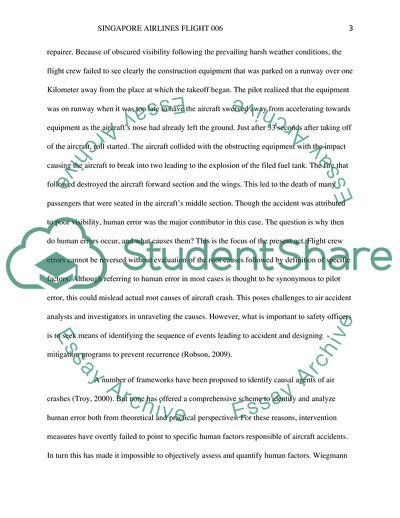Cite this document
(Singapore Airlines Flight 006 Report Example | Topics and Well Written Essays - 1750 words, n.d.)
Singapore Airlines Flight 006 Report Example | Topics and Well Written Essays - 1750 words. https://studentshare.org/psychology/1801869-describe-an-aviation-event-involving-one-or-many-of-the-aviation-fundamentals-that-have-been-taught-in-the-unit-list-the-critical-points-of-the-event-and-relate-them-to-your-study
Singapore Airlines Flight 006 Report Example | Topics and Well Written Essays - 1750 words. https://studentshare.org/psychology/1801869-describe-an-aviation-event-involving-one-or-many-of-the-aviation-fundamentals-that-have-been-taught-in-the-unit-list-the-critical-points-of-the-event-and-relate-them-to-your-study
(Singapore Airlines Flight 006 Report Example | Topics and Well Written Essays - 1750 Words)
Singapore Airlines Flight 006 Report Example | Topics and Well Written Essays - 1750 Words. https://studentshare.org/psychology/1801869-describe-an-aviation-event-involving-one-or-many-of-the-aviation-fundamentals-that-have-been-taught-in-the-unit-list-the-critical-points-of-the-event-and-relate-them-to-your-study.
Singapore Airlines Flight 006 Report Example | Topics and Well Written Essays - 1750 Words. https://studentshare.org/psychology/1801869-describe-an-aviation-event-involving-one-or-many-of-the-aviation-fundamentals-that-have-been-taught-in-the-unit-list-the-critical-points-of-the-event-and-relate-them-to-your-study.
“Singapore Airlines Flight 006 Report Example | Topics and Well Written Essays - 1750 Words”. https://studentshare.org/psychology/1801869-describe-an-aviation-event-involving-one-or-many-of-the-aviation-fundamentals-that-have-been-taught-in-the-unit-list-the-critical-points-of-the-event-and-relate-them-to-your-study.


